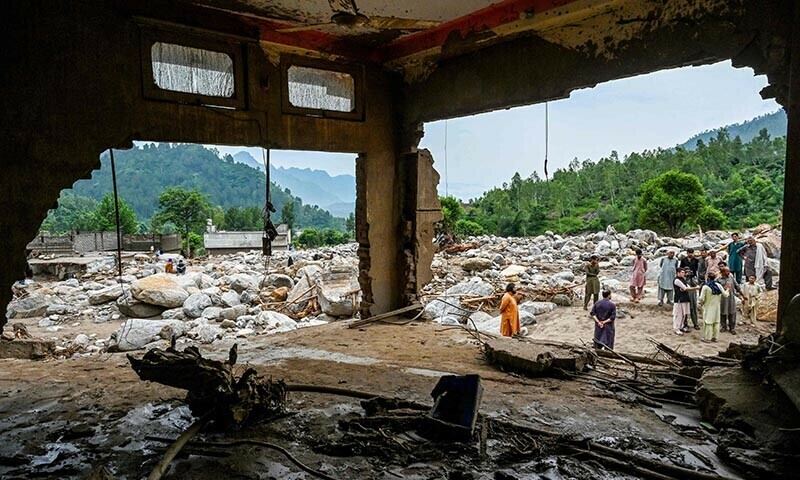
PESHAWAR: Education has emerged as the worst affected sector as the recent devastating rains and flash floods have completely destroyed 61 government schools while 414 others have been damaged in the affected districts of Khyber Pakhtunkhwa.
Of the total destroyed schools, 52 are government primary schools, seven middle and two high schools, according to official data.
Officials in education department told Dawn that the damage to buildings of schools would surge as more reports of destroyed schools were in pipeline. Dir Lower has recorded 17 destroyed government primary schools, the highest number, due to heavy rains and flash floods, followed by Shangla with eight destroyed primary schools.
In Haripur, the buildings of seven schools collapsed including five primary and one each middle and high schools.
Official says alternate arrangements to be made for imparting education to students
Similarly, the buildings of eight primary and two middle schools were destroyed in Mohmand tribal district, five in Battagram including four primary and one middle, four in Abbottabad including two primary and one each middle and high and two primary schools and one middle were destroyed in Swat, two in Mansehra and one each in Buner and Chitral Upper.
The devastating rains and floods have also partially damaged the buildings of 414 government schools including 319 primary, 36 middle, 43 high and 16 higher secondary in the affected areas of the province.
Of the total partially damaged schools, 122 are situated in Swat including 88 primary, 13 middle, 13 high and eight higher secondary, 67 in Abbottabad including 52 primary, seven middle, six high and two higher secondary, 72 in Shangla including 55 primary, six middle, nine higher and three higher secondary and 69 in Dir Lower including 68 primary and one middle.
![https://www.dawn.com/news/1931246]
Likewise, 29 schools have been damaged in Haripur including 27 primary and one each middle and high, 17 in Buner including six primary, four middle, five high and two higher secondary, 12 in Mohmand including six primary, two middle and four higher schools and nine in Battagram including four primary, three middle and two high schools.
The catastrophe has also partially damaged eight schools in Mansehra out of which five are primary, two middle and one high, three primary schools in Dir Upper and one primary school in Bajuar.
The official data also revealed the four teachers and one non-teaching staff were killed due to rains and floods in Buner while three other teachers were injured. The data shows that four students were killed in the disaster.
“We will continue students’ education by all means,” the secretary of elementary and secondary education department, Mohammad Khalid, told Dawn when asked as to how they would impart education to students enrolled in the destroyed schools.
He said that they would opt for establishment of pre-fabricated schools to save time as such structures could be established within one or two months.
“The department has already planned establishment of 50 pre-fabricated schools in different parts of the province. We will change the plan and set up such schools in flood-affected areas,” he said.
An official of elementary and secondary education department told Dawn that the infrastructure of government schools was present in each village and neighbourhood council, that’s why education department faced huge losses in natural and manmade disasters.
“Hundreds of government schools had been destroyed in the devastating earthquake in 2005 in Hazara division. Provincial government reconstructed a large number of those schools but still many could not be rebuilt owing to inefficiency of Federal Earthquake Reconstruction and Rehabilitation Authority (Erra) and Provincial Earthquake Reconstruction and Rehabilitation Authority (Perra),” he said.
The infrastructure of education department was also severely affected during war against terrorism as many government schools were bombed by terrorists. Some schools were also destroyed by the devastating floods in 2010 in the province.
Published in Dawn, August 18th, 2025
